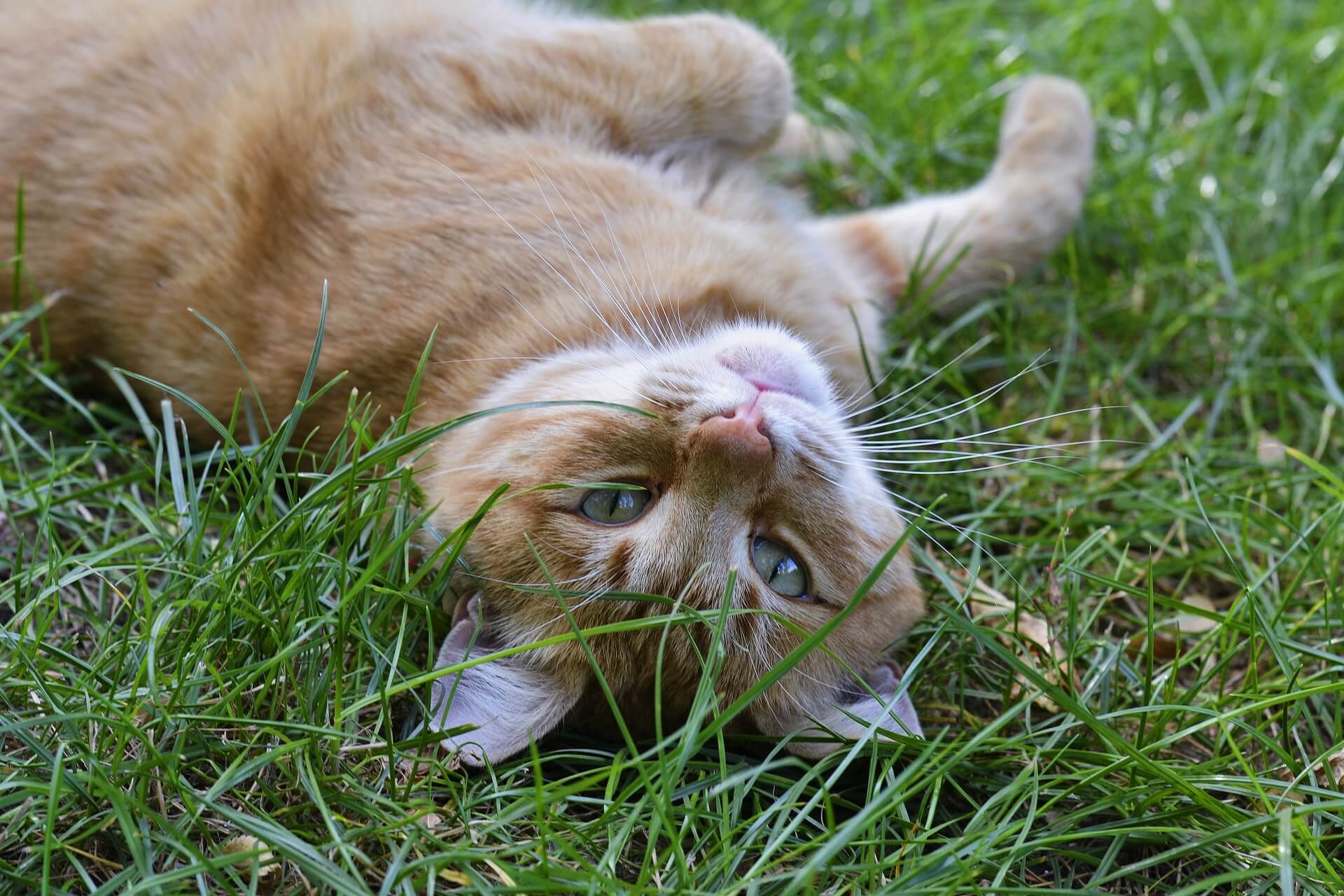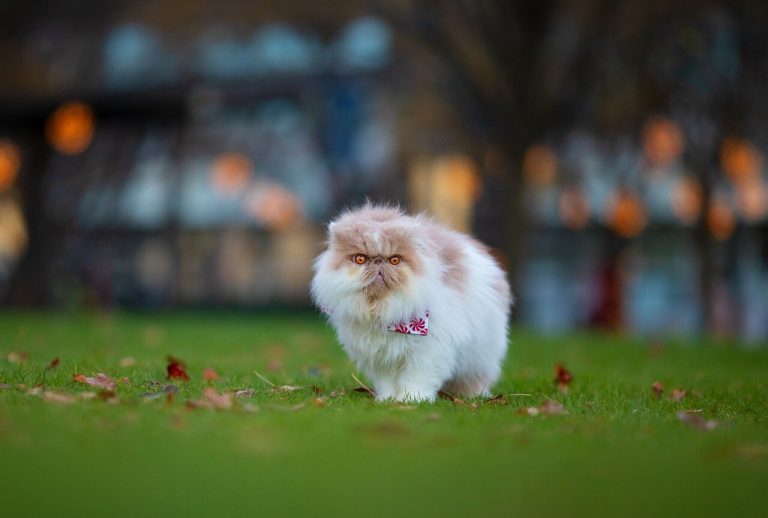Can Cats Eat Grass?
One of the most popular questions asked by cat owners is whether or not cats can eat grass. This article will discuss whether or not it is safe for your cat to have access to common lawn grass.
Cats are carnivores, which means that they eat meat. Cats consume their prey in its entirety including bones and fur which are indigestible.
Grass seeds composes an important part of the diet of many herbivorous animals, including rabbits, horses, cattle, sheep, deer, rodents and birds. Most people know that rabbits eat their own hair (which is why they need so much fiber in their diet), but did you know that horses regurgitate undigested food to chew on?
Horses do this because their stomachs are structured to digest grasses, not meat.
Although herbivorous animals have some enzymes that break down cellulose in plants, they cannot completely digest the cellulose, so they need to eat more of it than a carnivore would need to compensate for this.
Carnivores are able to easily digest bones and fur of their prey, so the small amount of indigestible matter is enough to fulfill their dietary needs.
Cats lack the enzyme needed for proper digestion of grasses and therefore eating grass does them no good whatsoever.
A cat might be tempted by freshly mowed lawns but will usually spit it back up quickly along with any other undigested food matter such as hair, feathers or bugs.
As cute as it is to see your cat playing with grass, you should probably discourage him from eating it if he tries. If your cat eats too much grass it can cause vomiting and diarrhea, abdominal pain and flatulence.
There have been cases of cats being harmed by eating grass that contained pesticides or fertilizers so it’s best just to keep your kitty away from the lawn mower altogether if possible.
Once in a while however, cats will eat grass on their own without being prompted so this leads some people to think that perhaps they are doing it out of hunger rather than curiosity or boredom.
While your baby kitty might be extra hungry at certain times such as after waking up from a long nap, cats are not humans and do not have the same needs as us. There is no need for your cat to eat grass just because you are studying for an exam or having trouble sleeping!
Cats sometimes purr when they are feeling happy so it’s easy to think that they are thanking their owners for giving them some fresh greens, but this is far from the case.
They aren’t even necessarily thanking their owner – purring can be used to communicate with other cats in addition to humans. So while kitties might occasionally enjoy nibbling on some tender greens, their main diet should still consist of meat-based products if they really want to thrive!
How long can cats go without food?
Contents
Many people think cats can go without food for several days, but in fact, cats need to eat regularly. If your pet isn’t eating or refuses to eat, she is probably sick and should be seen by a veterinarian immediately.
A cat’s ability to survive long periods without food depends on temperature, activity level and the health of the individual animal.
Cats are built for survival despite not having an outward appearance that reflects just how capable they are at enduring hardships. For example, their body temperatures are lower than most other animals’ so they conserve energy when it’s cold out — yet they can also withstand high temperatures better than dogs because their thick coats give them insulation from heat.
A healthy adult cat can usually go about seven days without food before showing signs of starvation. This number increases if the cat is elderly, young or sick. If your cat hasn’t eaten for four days, take her to the vet immediately.
Cats are also able to get hydration from their food rather than drinking water, so don’t confuse thirst with hunger when trying to determine if your pet is eating enough during times of scarcity. An overweight kitty can go without food for even longer periods because she simply isn’t hungry.
What food can cats eat?
Cats are known to be fussy eaters especially when it comes to their food. However, this does not mean that you cannot feed them a healthy and nutritious diet. As a pet owner, it is your responsibility to ensure that your cat gets the right food for its good health and well-being despite its pickiness.
The list of food cats can eat:
Dry food
Dry cat food is by far the most popular type of pet food in the market. This kind of diet is made out of meat or meat-derived ingredients, carbohydrates, vitamins, minerals, fiber and other essential nutrients that are required for your cat’s good health.
These products come in many different flavors and varieties to cater different cats with their unique tastes. Proteins are also an important part of this kind of diet as they help repair damaged muscles while providing energy to your pets for better performance at home.
Experts suggest that you give wet food to kittens who are less than six months old since it can provide them sufficient protein intake through digestion which will aid them in growing healthy and strong despite their young age.
Look for dry food brands that include high levels of protein, fiber and taurine for an added boost to your cat’s immune system.
Wet food
Wet cat food is actually the most recommended type of meal you can give to your pet because it has high moisture content which means that your feline friend will ingest more water along with its daily diet. A bowl of wet food contains about 70-75% water while dry food only has 5-10%.
This also explains why cats who are fed with this kind has lesser chances of getting kidney or bladder issues in their old age. However, make sure that you do not overfeed your pets as it can lead them to gain weight if they eat much since this type is typically appetizing.
Commercial food
Commercially-prepared pet foods are for pets who are sick or have specific health problems. It is made out of carefully selected ingredients designed to provide your cat with the nutrition it needs while improving its condition over time. Veterinarians often recommend commercial pet food to cats who experience kidney disease, diabetes, dental issues and many other conditions that affect their overall health. Look for brands that contain specific nutrients like glucosamine which can help reduce pain caused by arthritis or other age-related diseases.
Cats that are diabetic need special food as well since this type of diet contains high levels of protein and low amounts of carbohydrates which will prevent further increase in blood levels after eating. Diabetes also reduces a cat’s ability to produce insulin which is why you have to ensure that your pet gets enough of it from its daily diet.
Natural food
Natural foods are those types of ingredients that can be grown directly from nature or harvested, processed and packaged as pet food.
With this type, you do not have to worry about the quality as well as safety of the product because real meats and fresh vegetables are included in the list of its ingredients.
This kind also contains high levels of protein and low carbs which means that your feline friend will be able to handle blood sugar well despite its condition.
Substances like calcium and taurine found in natural cat foods can aid pets suffering from heart disease or joint problems whereas iron-rich minerals like selenium can help reduce anemia in felines.
Natural pet foods are often recommended for kitties that have allergies since they contain fresh, all-natural ingredients which do not include harmful chemicals or preservatives that could endanger your cat’s overall health. Just make sure that you only buy products made in United States or Canada because other countries might not meet certain quality standards.
Canned food
Canned food is another option for people who wish to feed their cats with 100% natural products. It comes in different sizes depending on the manufacturer so it can even be given to kittens when they are still small to aid in proper growth and development of their body parts.
This type of diet also contains high protein levels making it one of the best choices for felines who have muscle problems. But since it is processed using salt, you have to limit the amount given to your pet or else it can lead them to get a high blood pressure in some cases.
Canned food is also recommended for obese cats because it contains extremely high levels of water that reduce down your pets’ appetite if they already feel full.
This type of food also boosts dental health since cats that eat this kind are less likely to develop plaque and tartar buildup in their mouths, which means that your pet can stay away from tooth problems when fed with canned food.
Homemade meal
A homemade meal is also an option for people who really want to feed their pets with quality food that is prepared by them personally. It’s just a mixture of different pet food inclusions, but you have to make sure that its ingredients are 100% all-natural and provide your kitty with the vital nutrients it needs daily.
Cats are carnivores so they need meat to survive, but they can also eat vegetables and fruits if they prefer these to animal by-products. You just have to be creative in coming up with different recipes that you can feed your favorite feline friend with so it won’t get bored of eating the same thing all the time.
Raw food
Raw food is also another option for people who wish to start a raw diet for their cats. This type of food contains high levels of proteins and low carbs so it will keep blood sugar at bay despite a cat’s diabetic condition.
It’s a whole-prey kind of meal which means that meat is included in its ingredients, but you have to make sure that the products used are free from harmful chemicals or preservatives that can endanger your pet’s overall health.





